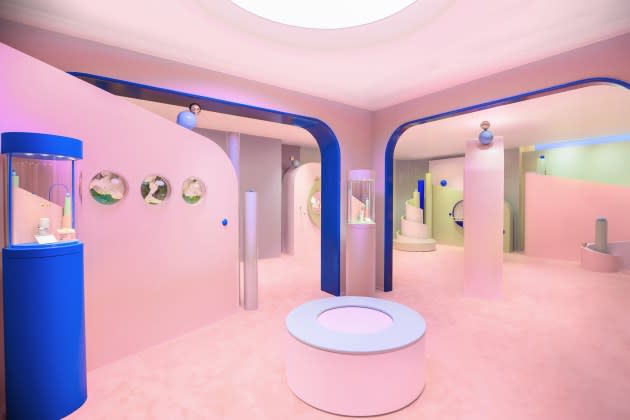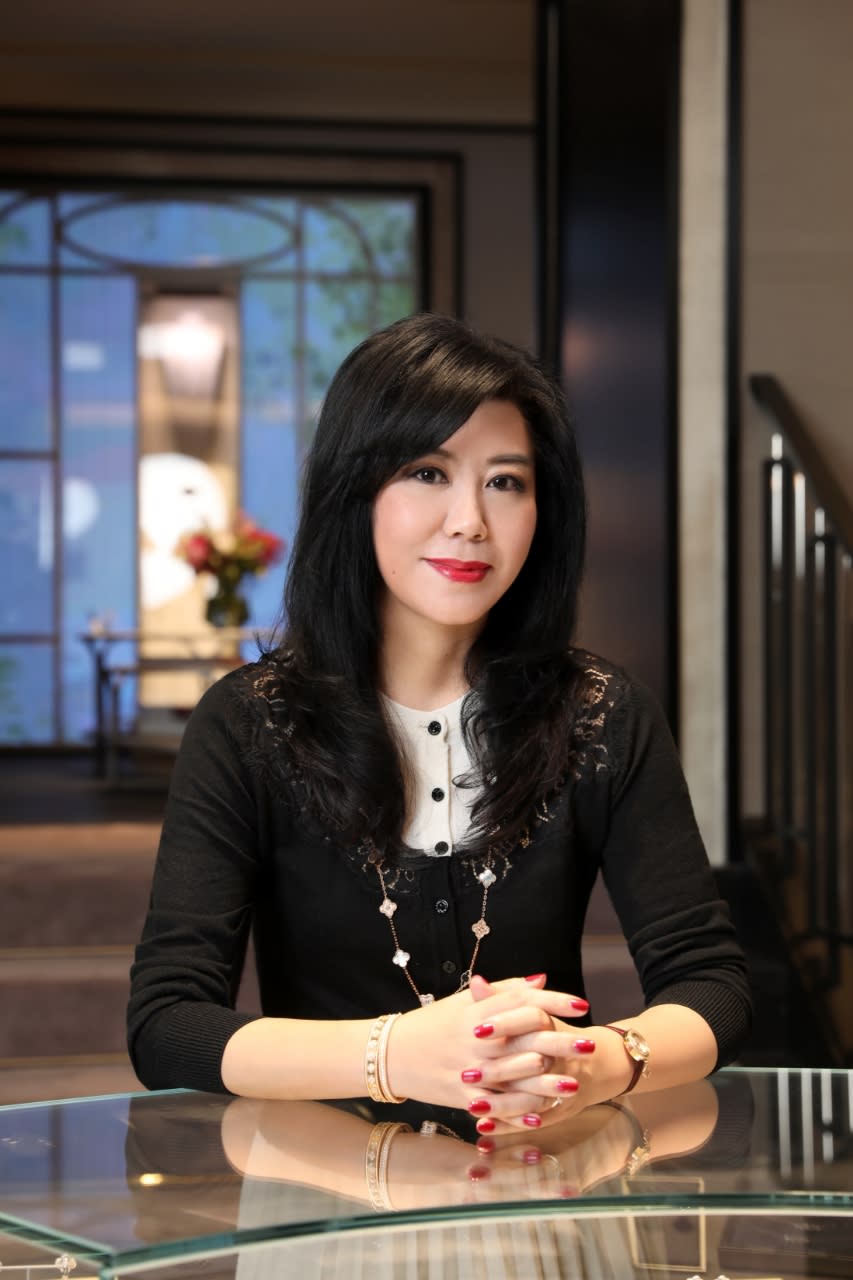Van Cleef & Arpels Launches Perlée Pop-ups Across Six Cities in China

For the first time in China, Van Cleef & Arpels installed a pop-up event at a venue outside of its comfort zone, the luxury shopping mall.
The pop-up, which spotlights the Richemont-owned high jewelry brand’s Perlée collection, recently took over a candy-colored home objects boutique called Somethin’ Else on Yuyuan Road, a tourist-friendly neighborhood dotted with intricate town houses and charming cafés.
More from WWD
Roche Bobois Readies to Take on China With Majority in Local Franchisee
Machine-A Rethinks China Strategy, Explores New Ways to Exist
Design Shanghai's New Collectible Art Fair to Bow in October
The candy-colored world of Perlée, a jewelry line that highlights gold beads, is based on a graphic installation designed by Arthur Hoffner, a French artist and longtime collaborator of Van Cleef & Arpels. Products featured in the pop-up includes both archival, or “patrimony” pieces, as well as the full range of Perlée rings, bracelets, pendants and watches.
The Shanghai pop-up will be available until July 21 by appointment.
After its Shanghai debut, the pop-up will launch this summer at Beijing’s Art024 retail complex, as well as landmark luxury malls in major cities, including Nanjing, Wuhan, Shenzhen and Hangzhou.
The interactive space, where oversize beads bobbed about, swirled around and danced up and down the space, was meant to entertain adults and children alike.
“It’s really about creating the right context for something super abstract. It’s a place for people to experience the colorful, playful and joyful side of the maison. We hope that jewelry will bring more joy to our lives, rather than being merely a merchandise. You have to experience the atmosphere to want to step into the universe of Van Cleef & Arpels,” said Laura Lai, managing director at Van Cleef & Arpels China.
For Lai, the experiment to show at an offsite location was meant to capture those who are intimidated by the shopping mall experience. “We have ran into a dilemma at shopping malls. It seems only to attract serious shoppers most of whom are female, which means the environment can be intimidating for some, for example, introverted male shoppers,” said Lai.
“Data from e-commerce also shows that our clientele across different channels doesn’t really overlap, so if we want to have a place where different kinds of shoppers can interact within our brand universe, if we want to make new friends outside of malls, we must step outside and hit the streets. Shanghai is a pretty mature market for us, we have five stores here, it is one of the biggest e-commerce markets for us in China, so it was the right place to give it a try,” Lai added.

For Van Cleef & Arpels, despite a tough local market reality, shoppers are instilling new meaning in the brand’s Alhambra collection as “good feng shui items,” which in turn support sales and drive brand awareness.
“In an economic downturn, what matters more for a brand is the market share,” said Lai. “When the cake shrinks, we want to get a bigger piece of the pie, we want to be the go-to brand during one of the three Chinese Valentine’s days,” said Lai, who surmised that anchor holidays will become more important in an economic downturn.
“Disposable income might shrink, but people crave the ritualistic part of shopping even more. Especially for young people, it’s a major source of happiness,” said Lai.
The yearning for romance will also persist, especially during China’s three Valentine’s days, which includes the February Valentine’s Day, 520 Valentine’s Day in May and Qixi in August. For Chinese men, this meant that they are in survival mode at least three times a year, observed the good-humored Lai.
As of today, Van Cleef & Arpels counts 29 stores (excluding two duty-free shops in Hainan) in mainland China, with two new doors, one in Suzhou and one in Beijing, slated to open this year.
“E-commerce gave us a lot of insight. Suzhou has always been one of the top-three markets online, and even though it’s a 15-minutes train ride away from Shanghai, the Suzhou people would rather purchase from the comfort of their phone screen,” said Lai. “That’s why we wanted to reinforce the market by adding a retail store.”
“As our fourth store in Beijing, we wanted to further tap into the potential of the market. There aren’t that many new anchor projects in Beijing, but WF Central is one of those, it is close to a tourism area, so it’s got great visibility,” said Lai, who unveiled that the three-story, 500-square-meter space will ensure brand exposure in the all-important regional market.
As for how Van Cleef & Arpels plans to attract young Chinese consumers, many of whom are bracing for a tough job market, Lai said Van Cleef & Arpels has a lot of patience and has no plans to do anything specific for Gen Z shoppers.
“I’m highly certain that no one would ever say ’graceful’ is a bad word,” said Lai. “There is a universal understanding of what is elegance, for different age groups and consumer segments. All we want to do is have the 18-year-olds aspire to be, that’s enough, that’s the meaning of luxury,” she added.
“However, it’s always a learning process with our Chinese shoppers, they inspire us to embrace the new, however, we are careful to ensure brand relevancy,” added Lai.
For the brand’s Perlée pop-ups, that meant staying away from serving coffee or tea — elements that excite the Chinese middle class.
Best of WWD

 Yahoo Finance
Yahoo Finance 